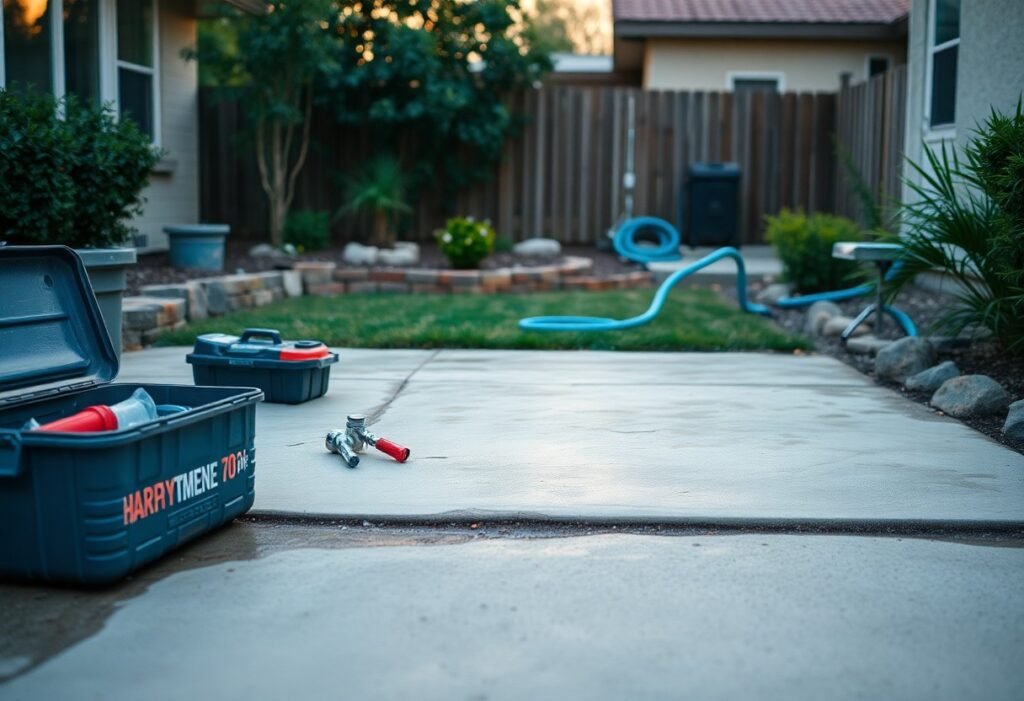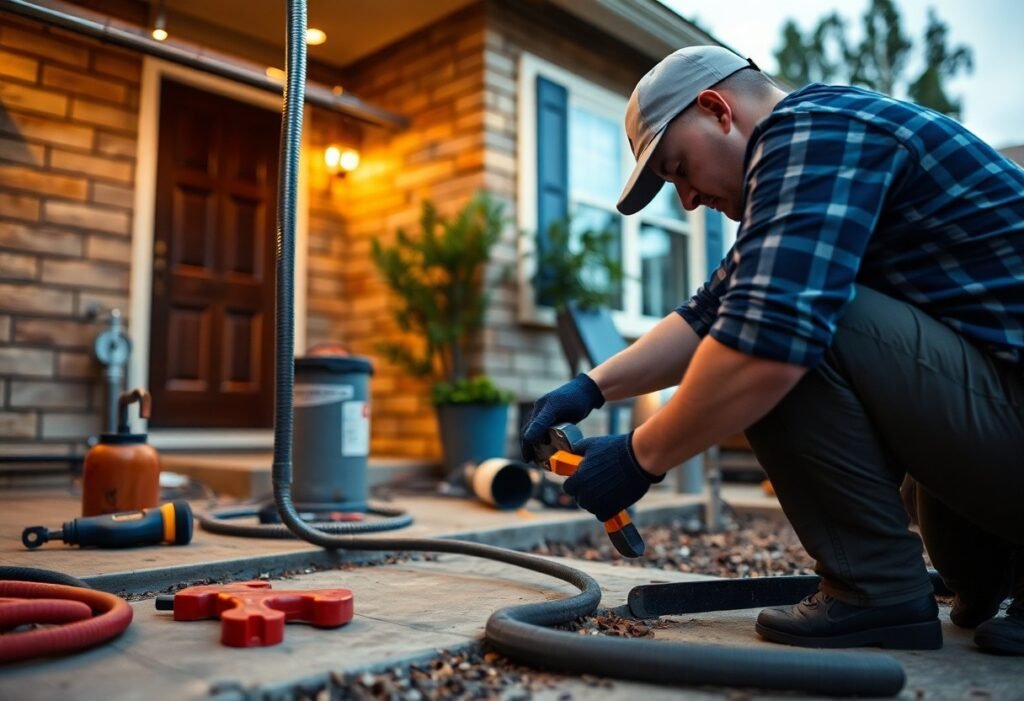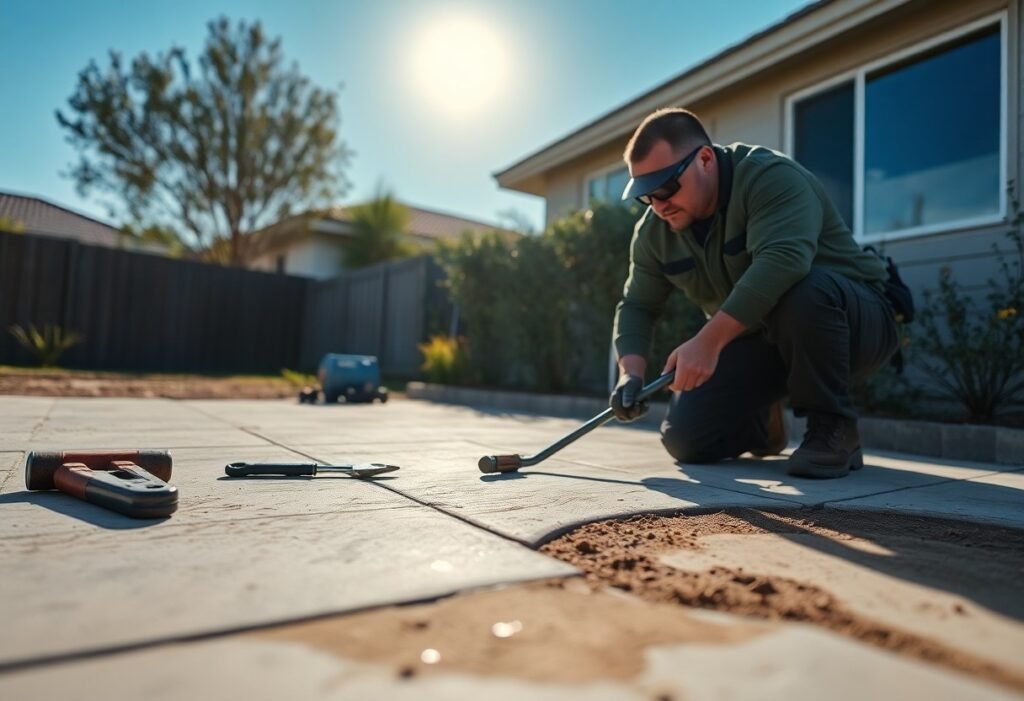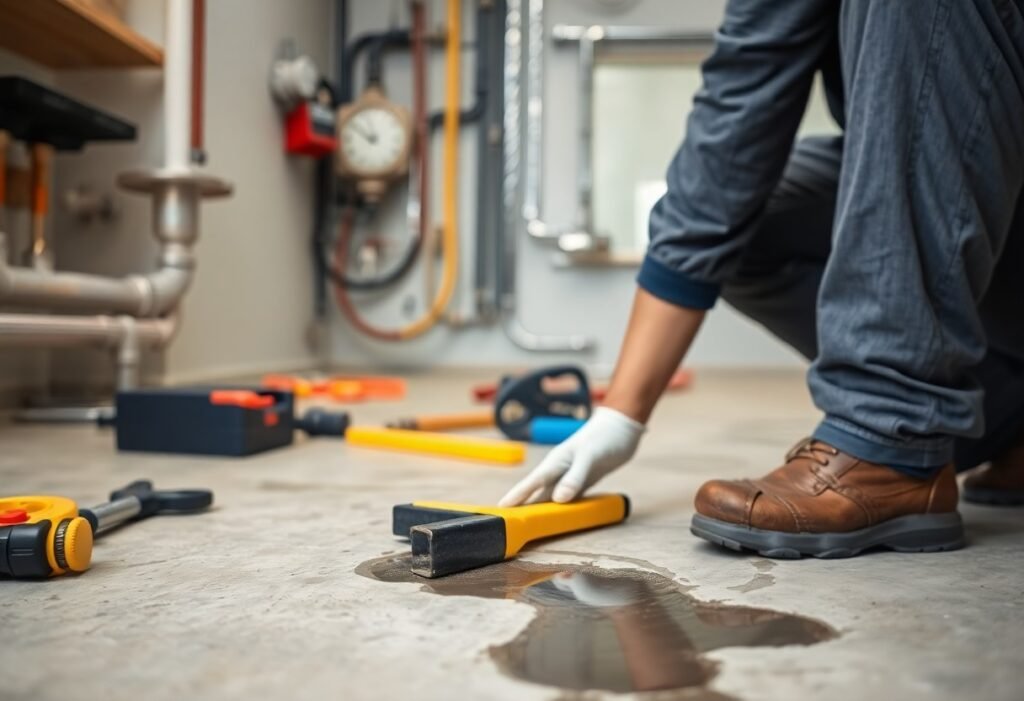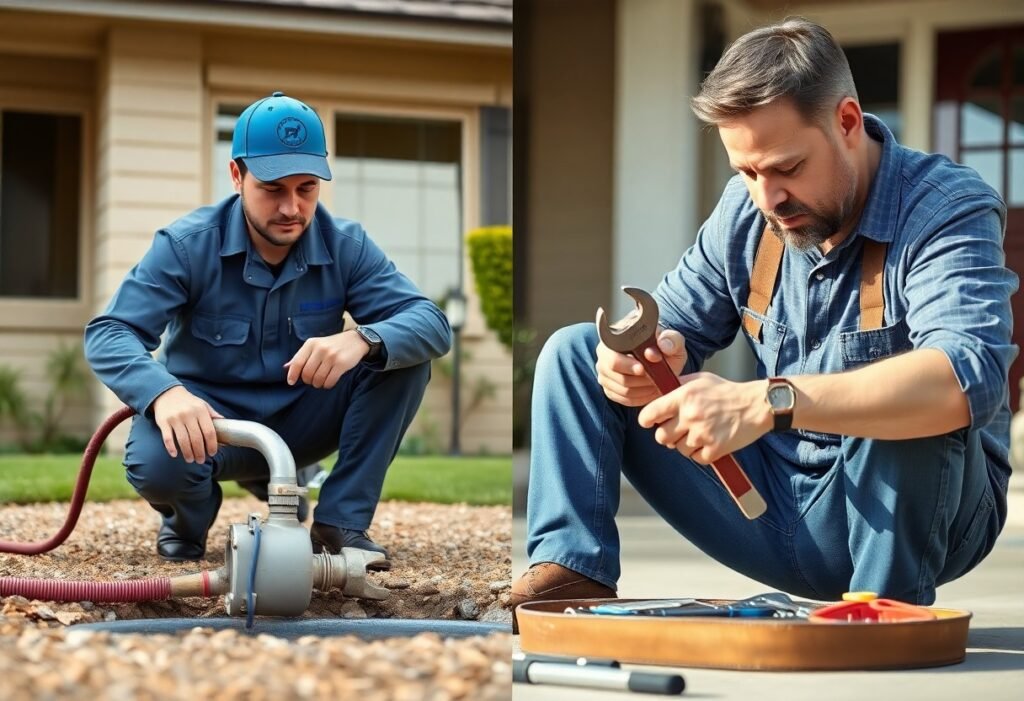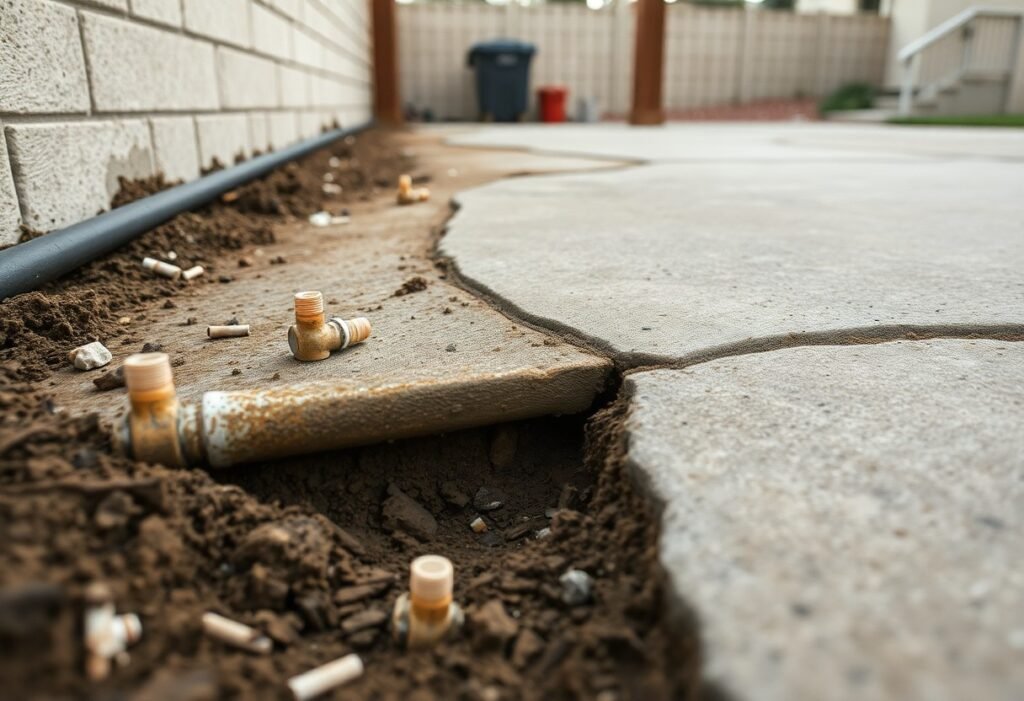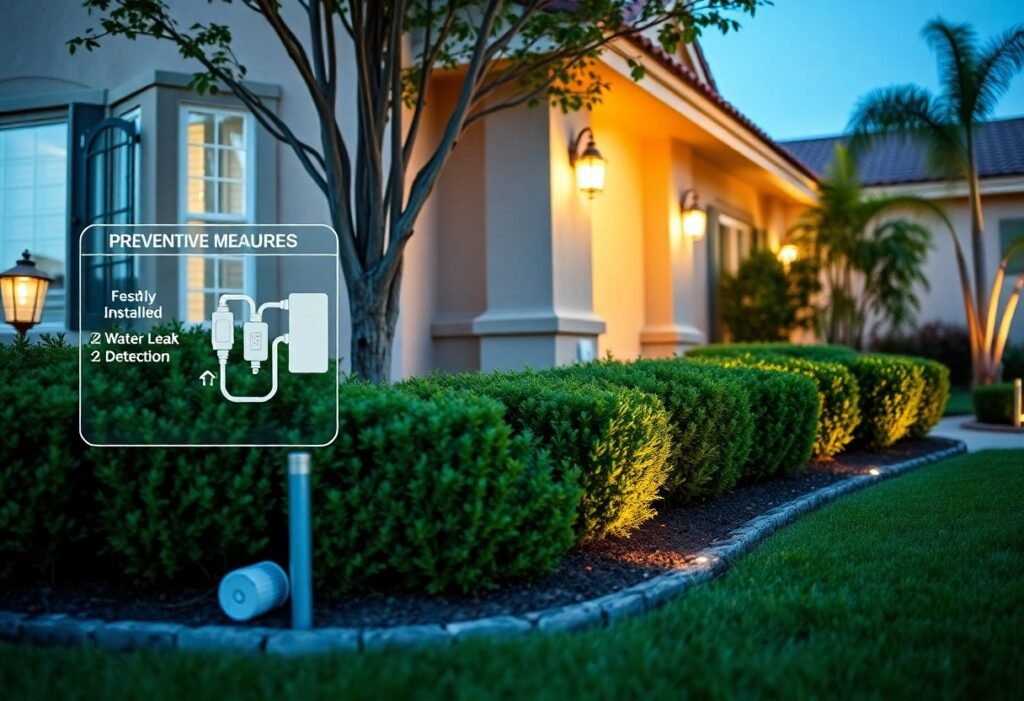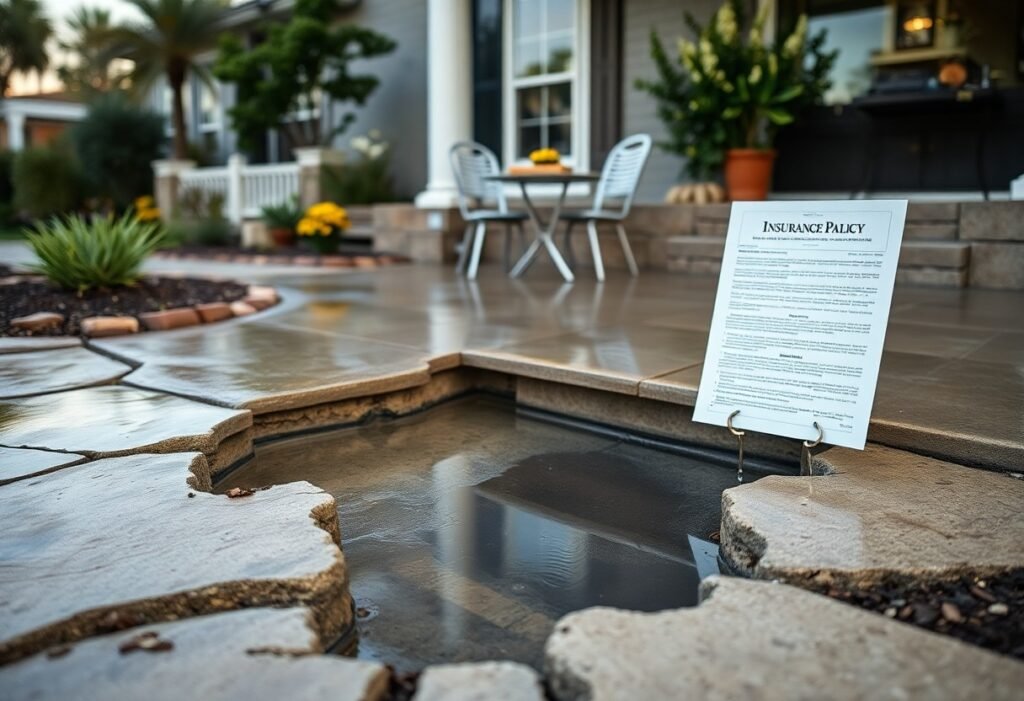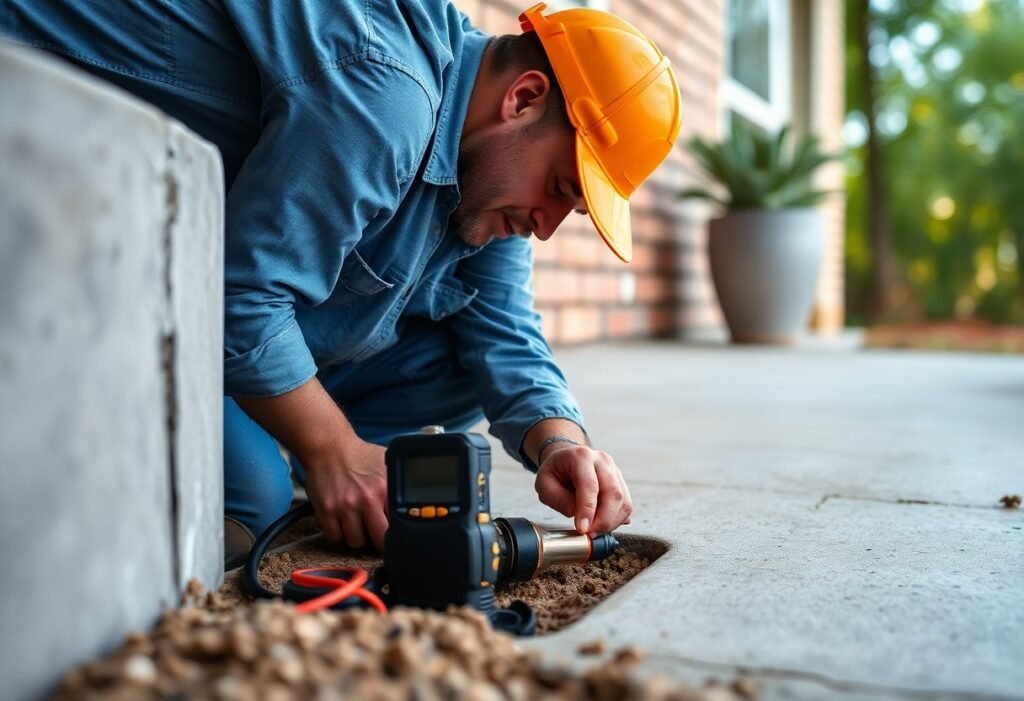Why Slab Leaks in Garden Grove, California Shouldn’t Be Ignored
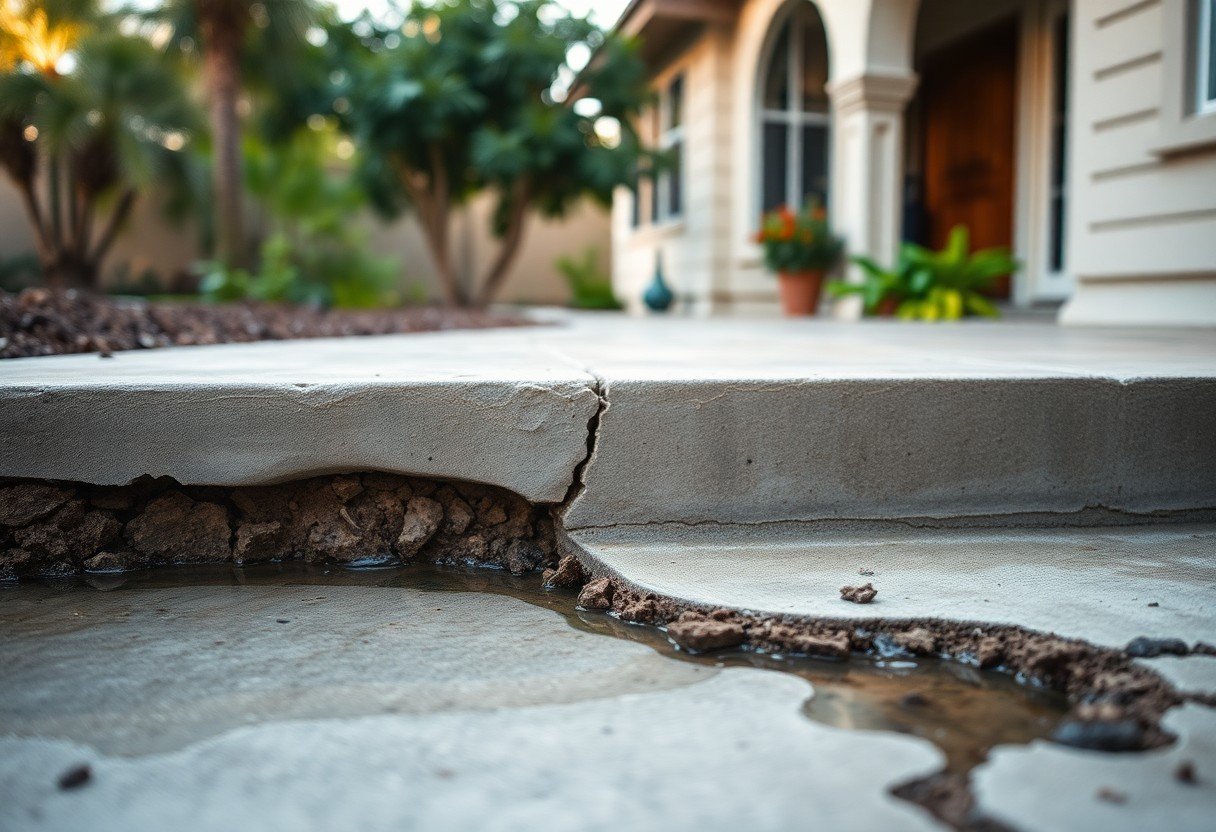
Slab leaks can silently wreak havoc on your property, leading to severe structural damage and health risks if left unchecked. In Garden Grove, California, the warm climate can exacerbate these leaks, making it imperative for you to stay alert to signs such as increased water bills or damp spots on your floors. Addressing a slab leak promptly not only preserves your home’s value but also protects your family from potential mold growth and other hazards. Don’t let a minor issue turn into a major catastrophe—take action today!
Key Takeaways:
- Slab leaks can lead to significant structural damage if left unaddressed, potentially compromising the integrity of your home.
- Ignoring slab leaks can result in higher water bills due to wasted water, impacting both your finances and the environment.
- Early detection and timely repair of slab leaks can prevent extensive property damage and costly repairs in the future.
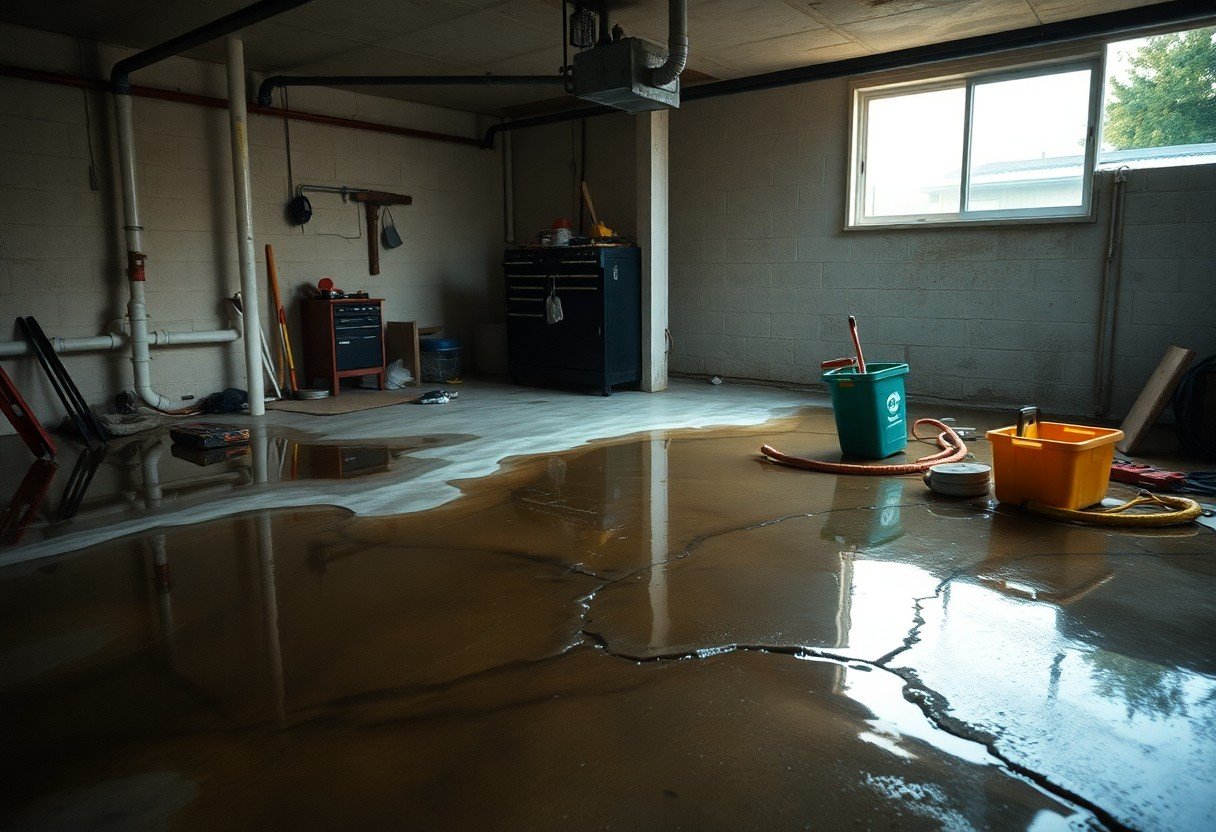
The Costly Consequences of Ignoring Slab Leaks
Letting slab leaks go unattended can lead to extensive damage and financial strain. Ignoring these issues not only preserves the problem but allows it to escalate into a more serious situation. You risk not just minor leaks, but the potential for major floods beneath your home, which can diminish your property’s value and force you into costly repairs.
Financial Burden: Repair Costs Escalate Over Time
The longer you delay addressing a slab leak, the more significant the financial burden becomes. A simple leak can escalate to significant water damage, mold remediation, and even full slab replacement. What could start as a modest repair costing a few hundred dollars can spiral into thousands as the damage spreads and worsens.
Property Damage: The Threat to Structural Integrity
Ignoring slab leaks poses a dire threat to your home’s structural integrity, potentially causing foundational issues that require extensive repairs. Prolonged exposure to water can weaken concrete and lead to cracks, compromising the entire structure of your home. If left unresolved, these leaks not only cause immediate damage but can contribute to pest infestations and mold growth, both of which will further erode your property’s value and safety.
Structural integrity is paramount; each day that a slab leak remains unchecked increases the risk of catastrophic damage. Moisture can seep into materials like wood and drywall, creating an ideal environment for termites and mold growth. Studies show that homes with unresolved water issues can suffer a 30% decrease in property value. The stakes are high—decaying beams and buckling floors can ultimately lead to potential collapse. Regular inspections and prompt action against slab leaks are vital for safeguarding your home and investment.
Detecting the Unseen: Warning Signs of Slab Leaks
Being vigilant for signs of slab leaks can save you from extensive damage and costly repairs. Your home may exhibit subtle hints of an underlying issue that could escalate if not addressed early. From the sound of running water to noticeable shifts in your flooring, recognize these warning signs to safeguard your property and finances.
Water Bill Spike: A Silent Alarm for Homeowners
A sudden increase in your water bill can serve as a glaring indicator of a slab leak. If you notice your monthly charges rising without any accompanying changes in your water usage habits, it’s time to investigate. Even slight fluctuations can hint at an ongoing leak that is silently draining your resources and damaging your home.
Unexplained Puddles: The Surface Tells Many Stories
Finding unexpected puddles inside your home or around its foundation can signify a hidden slab leak. These water accumulations often occur due to the persistent seepage of water from pipes beneath the concrete structure. If you observe damp patches or water pooling in certain areas consistently, taking immediate action is important to prevent long-term damage and costly repairs.
Unexplained puddles can form in various parts of your home, particularly near walls or along traffic areas that typically remain dry. The problem may start with small damp spots that gradually expand, creating an oasis in what should be dry living space. This moisture can lead to mold growth, which not only poses health risks but also adds to repair expenses. Being proactive about these signs and addressing them swiftly can mitigate the extent of the damage and save you significant repair costs in the long run. Take time to examine and identify these areas, as they might just be the clues you need to uncover a deeper plumbing dilemma.
Health Hazards Associated with Slab Leaks
Ignoring slab leaks can expose you to a range of health hazards that pose significant risks to you and your family. Mold and mildew thrive in damp environments, which can lead to respiratory issues, allergic reactions, and other health complications. Additionally, water quality deteriorates with prolonged leaks, increasing the chances of contamination. For more guidance on dealing with slab leaks, check out What to Do When You Have a Slab Leak in Orange County.
Mold Growth: A Hidden Danger in Your Home
Excess moisture from slab leaks creates an ideal breeding ground for mold. This fungus can grow on various surfaces, including walls, carpets, and insulation, often leading to allergic reactions and respiratory problems in occupants. Some species of mold can produce toxic substances, compounding health risks for those exposed.
Water Quality Issues: Contaminants and Their Risks
With slab leaks, not only are you losing water, but you may also be at risk of exposing your household to contaminated water. As the leak persists, stagnant water can lead to bacteria growth and the leaching of harmful substances from pipes and soil. This can make your drinking and cooking water unsafe, endangering your health and that of your loved ones.
Contaminants present in leaking water can include harmful bacteria like E. coli and Legionella, both of which can cause serious illness. Additionally, if the leak occurs near sewer lines, you may face an even higher risk of exposure to sewage contaminants. Regular testing of your water quality becomes imperative to safeguard against potential health risks associated with prolonged exposure to these dangerous elements.
The Expert Perspective: Recommendations from Local Professionals
Consulting local plumbing experts can provide tailored insights into managing slab leaks in Garden Grove. Professionals emphasize the significance of immediate attention to even minor leaks, highlighting the potential escalation of damage if left unaddressed. Many recommend regular plumbing inspections and adopting proactive measures to mitigate issues before they arise. Additionally, understanding the local plumbing codes and the unique soil composition of the area can be critical. For in-depth guidance, check out this article on Why You Shouldn’t Ignore a Small Leak.
When to Call a Plumber: Timeliness is Key
Recognizing the right time to call a plumber can make all the difference in managing slab leaks effectively. If you notice increased water bills, unexplained wet spots on your floor, or sounds of running water when your fixtures are off, don’t wait. Prompt action can prevent damage from expanding, saving you both time and money in the long run. Early intervention often leads to simpler, less costly repairs, which is vital in maintaining your home’s integrity.
Preventative Measures: Safeguarding Your Home
Taking preventative measures against slab leaks can significantly enhance the durability of your home. Start with regular inspections of your plumbing systems and moisture levels in your home, particularly in areas prone to leaks. Installing water sensors and monitoring them through smart home technology can alert you to leaks before they escalate. Routine maintenance of irrigation systems and ensuring proper drainage around your foundation materials also mitigates water pooling, reducing the risk of soil erosion and saturating your home’s foundation.
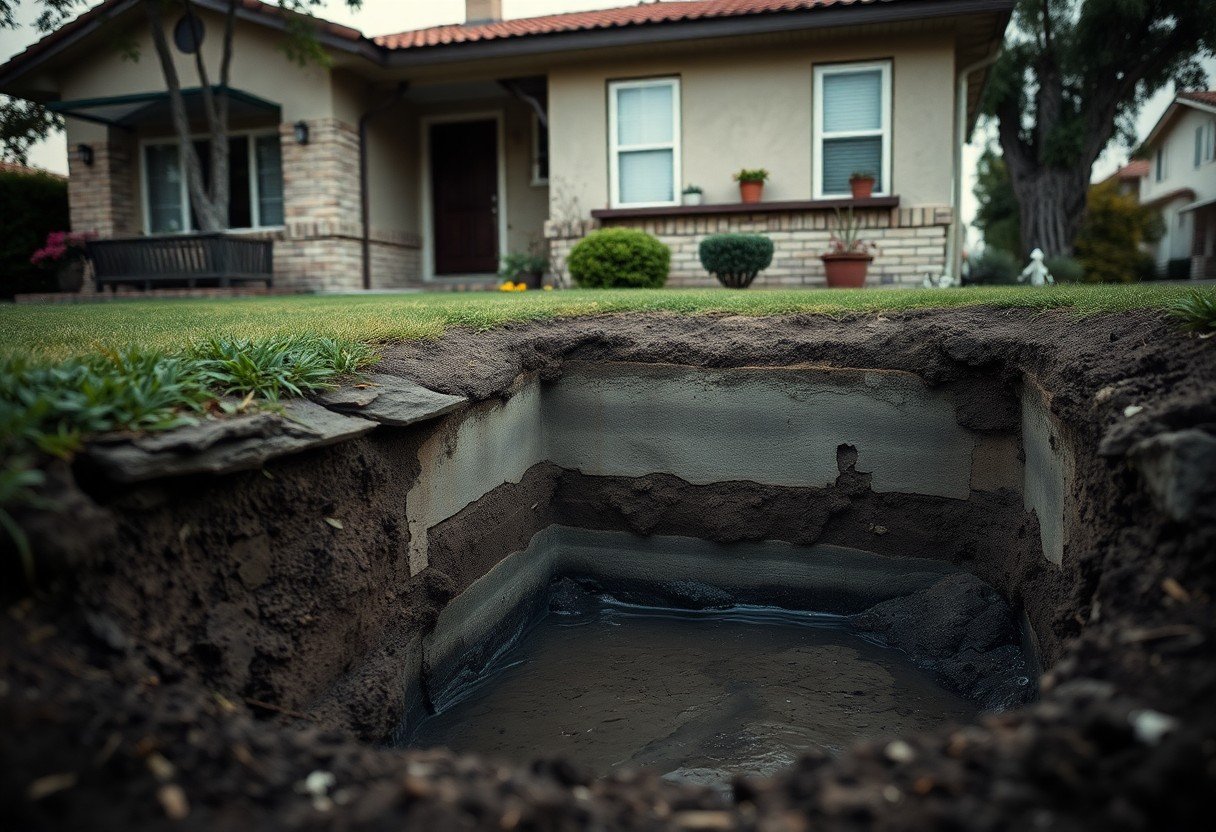
Real-Life Impacts: Testimonials from Affected Homeowners
Homeowners in Garden Grove have shared their chilling experiences with slab leaks, shedding light on the dire consequences of inaction. One homeowner recounted a time when a persistent dampness in their living room turned into a full-blown flood, leading to costly repairs that exceeded $10,000. Another family noted that waiting months to address a subtle crack in their foundation resulted in mold, which not only endangered their health but also severely impacted their home’s value. These testimonials emphasize the urgency of addressing slab leaks before they escalate into destructive headaches.
Cost Savings Through Prompt Action
Acting quickly on slab leak detection can result in significant savings. Homeowners who sought immediate repair reported avoiding extensive damage costs, which can surpass $15,000 when mold and structural issues develop. The expense of water bills also decreases dramatically once leaks are fixed, creating a noticeable improvement in monthly budgeting. Those who experienced prompt repairs saved not just money but also the stress that comes with lengthy, complicated restoration processes.
Lessons Learned: What Others Wish They Knew
Many homeowners wish they had been more proactive in recognizing the signs of slab leaks from the beginning. Waiting too long often leads to unexpected complications, including extensive damage and increased repair bills. For instance, one homeowner expressed regret over ignoring wet spots for months, as they later discovered it not only damaged the flooring but also led to electrical issues that required professional intervention. Acknowledging the early signs could have saved both time and money, highlighting the importance of vigilance and timely action.
Homeowners have repeatedly emphasized the critical role of awareness. A well-informed owner will not only monitor subtle changes in their home but will also maintain regular plumbing checks. They underline that understanding your plumbing system and being attentive to unusual changes can prevent minor issues from snowballing into major crises. Additionally, many have advised investing in a professional inspection if you suspect a leak, as early intervention can significantly reduce repair costs and ensure your home stays safe and secure.
Final Words
To wrap up, slab leaks in Garden Grove, California, should be taken seriously, as they can lead to extensive water damage, mold growth, and costly repairs if left unaddressed. Early detection and prompt action can save you money and protect your property’s integrity. Therefore, if you suspect a slab leak, it’s vital to consult with a professional to assess the situation and implement the necessary repairs. Your home’s safety and your peace of mind depend on it.
Q: What are slab leaks and how do they occur in Garden Grove, California?
A: Slab leaks refer to water leaks that occur beneath the concrete foundation (or slab) of a building. In Garden Grove, California, these leaks can happen due to a variety of factors, including the shifting of the soil, the expansion of pipes due to temperature changes, or the corrosion of piping materials. The unique climate and soil conditions in Southern California can exacerbate these issues, making it imperative for homeowners to stay vigilant about potential slab leaks.
Q: What potential damage can slab leaks cause if left untreated?
A: If slab leaks are not addressed promptly, they can lead to extensive damage both to the foundation of the property and to the interior spaces. Over time, water can accumulate under the slab, leading to structural instability and even cracks in the foundation. Additionally, moisture buildup can result in mold and mildew growth, posing health risks to the occupants. This can also lead to costly repairs and renovations, making it vital for homeowners to detect and resolve slab leaks early on.
Q: How can homeowners in Garden Grove detect slab leaks before they become major problems?
A: Homeowners in Garden Grove can look for several signs of slab leaks, including unexplained increases in water bills, the sound of running water when no faucets are in use, damp or wet carpets, or the presence of mold and mildew in corners and hidden areas. Additionally, cracks in walls or floors could indicate shifting due to water accumulation. If any of these signs are noticed, it’s advisable to contact a professional plumber to conduct a thorough inspection and resolve the issue before it escalates.

